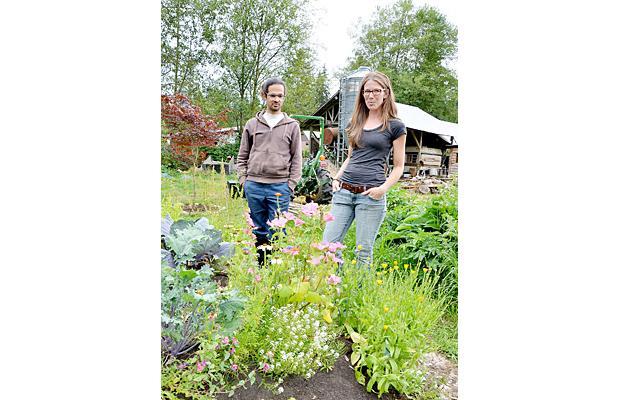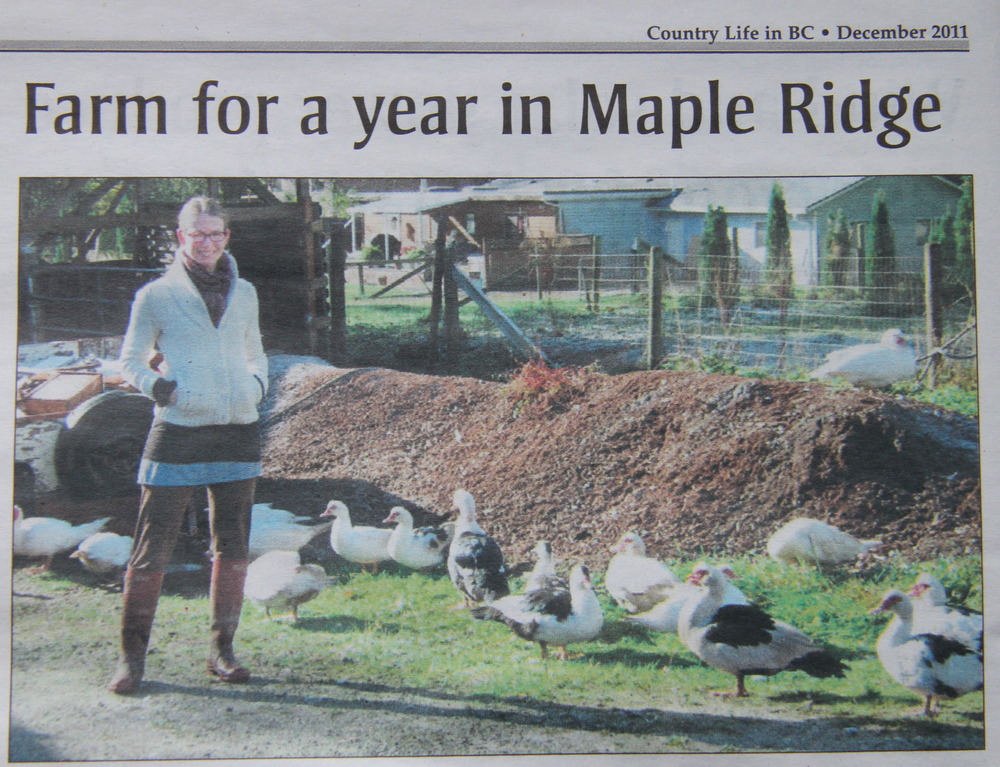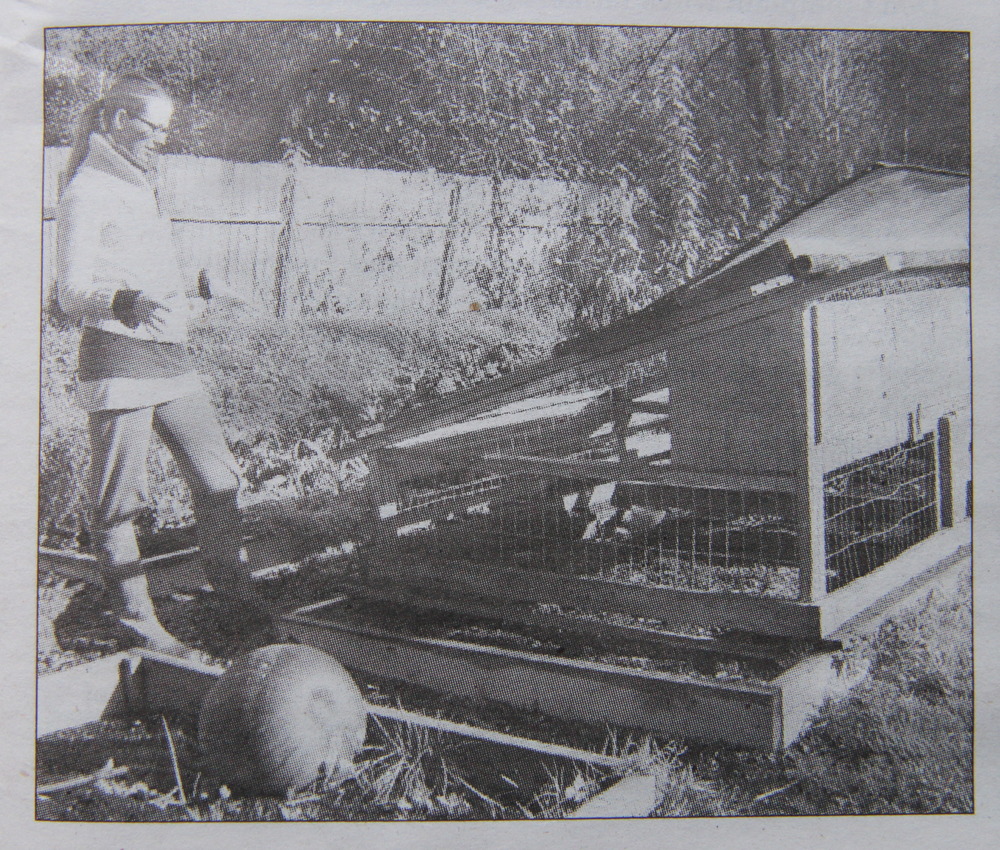Photo: Chris Kasza and Jocelyn Durston are farming on three different plots of land in Maple Ridge. Photograph by Maria Rantanen, TIMES
Chris and I were interviewed by the Maple Ridge Times recently about our Farm for Life market business and the piece was published today. Fun! Journalist Maria Rantanen wrote a story on us last year about our farming project and we were so happy to have her back on the farm to talk to her about what we’ve been up to since then. I’ve re-posted the article below and you can also read it online at www.mrtimes.com.
Couple spins magic on three small Ridge lots
A couple is joining a growing number of young adults who are growing food locally
By Maria Rantanen, The Times, September 27, 2012
With three small plots of land, a lot of hard work and sweat, but a love of the land, one couple in Maple Ridge is supplying marketgoers with fresh produce.
Jocelyn Durston and Chris Kasza are joining a host of young adults who are getting back to the land, farming on small plots, and trying to make a living off it.
The model for their farming is called SPIN – small-lot intensive farming – and with less than acre in production and with their first full season underway, Durston and Kasza are already selling at market and to a local grocery store.
After graduating with a master’s degree in urban agriculture and studying sustainability in producing food in an urban setting a few years ago, the work Durston was doing was theoretical rather than practical, working on public policy in an office setting.
But her heart was pulling her into the garden to do hands-on work.
She rented a space on the property of friends in east Maple Ridge, who had started gardening on their two-and-a-half acres.
Durston jumped into the project with her friends and started her Farm for a Year project, blogging her way through the experience.
In 2012, Farm for a Year morphed into Farm for Life, at which point her partner Kasza joined the project.
Durston said she thinks a lot of young people are starting to realize they don’t want spend 40 to 50 years sitting at a job, and that they don’t need to have big houses and big cars.
There is a lot of satisfaction in growing one’s own food, Durston said, and pursuing what they love doing and being their own bosses.
While Durston calls herself a farmer, Kasza said he prefers the term “market gardener.”
“It’s a lifestyle that we really love,” Durston said.
She also believes that despite the cost of land, there is a lot of under-utilized properties that could be farmed.
“There are a lot of creative ways to access land if you can’t afford it,” she said.
In addition to the lot they live on, Durston and Kasza have also been farming on two other lots in Maple Ridge.
The couple is selling produce from their gardens at the Haney Farmers Market every week bounty. They also sell produce to Roots on Dewdney Trunk Road.
Kasza estimated they are farming on about half to three-quarters of an acre of land.
This year, they’ve grown chard, several varieties of kale, cucumber, broccoli, carrots, beets, peas, and salad greens, zucchini and squash. They also have edible flowers, cut flowers, onions, and potatoes.
Whenever they go to a seed store and are faced with new possible varieties for their garden, they are like “kids in a candy shop,” Durston said.
Durston and Kasza have read a lot about small-lot farming, which is known as SPIN gardening. Some of the inspiration for what they’re doing came from reading about a man in Saskatoon, Wally Satzewich, who was able to make money by farming in people’s backyards using city water.
He focused on high-value foods that bring in money.
“We love doing this so our goal is trying to figure out if we can do this and make a living at it,” Durston said about their small-lot farming.
But they are still on a “learning curve,” Kasza added.
They estimate they can make about $10,000 next year with
their small-lot farming.
In addition to bringing cash from their crops, about 85 per cent of own fresh food is from their garden, which translates into huge food cost savings.
They’d also like to process the food they produce, for example, drying herbs, canning, and pickling.
Selling at the farmers market has allowed them to build relationships with their customers. One family comes to get kale from Durston and Kasza regularly – but it doesn’t last them the whole week, so they come mid-week to pick up more.


